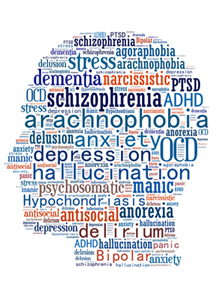(This article includes firsthand accounts from students at NS. This is THEIR stories. All references will be anonymous.)
It’s here.
Before anything else is said that needs to be established, this isn’t a problem in some faraway place where it can’t reach us; it’s here at NS.
We’ve all seen the videos, we all gather around in our advisory classes, and listen to stories about people “just like us” who have these problems they try to educate us about.
Yet still the issue remains quiet.
One in five teenagers are affected by some form of mental illness. That doesn’t sound like much, and statistics say you are more likely to be fine than not. But think about it, on a drive with friends, in a basic 5-seat car, one of these people you know is struggling with something that goes unseen.
So why don’t we talk about it? If this is such a huge issue, why don’t you hear about it from anyone?
Talking about mental illness isn’t the same as talking about a concussion or a broken bone. What’s going on in one’s head is so much harder to talk about then any sort of physical problem.
Even if it was not as difficult to talk about, there are some who think that telling a person with depression to get outside more, or telling a person with anxiety to calm down is helping.
It’s not that simple.
Ask the student who has a panic disorder, who can be launched into a state of intense fear at the drop of a hat.
“I always pictured it like that scene from ‘the Dark Knight’ where the Scarecrow releases his fear gas,” she said. “Suddenly, everything around me that usually is mundane and common is the things of my darkest nightmares; suddenly I’m not myself, I’m a nontemporal being of fear and terror.”
In this particular student’s case, panic attacks can occur at any time, without a warning or trigger. These panic attacks can be as long as an hour, during which, the victim is almost completely disconnected from the world around them, and is lost in a void of intense and unbearable fear.
Anxiety is sharp; it’s loud and painful. It consumes its host, filling you up.
“It’s like a little monster with a clock constantly telling you you are late. It’s all you can hear,” said one student.
Depression is the exact opposite. It’s not just sadness, it’s emptiness. It’s quiet and takes everything from you until you feel numb.
“[Depression is] never wanting to move. It’s giving up everyday. It’s complete despair,” said one student. “There is so much going on, yet you can’t feel anything.”
These are only two of hundreds. Insomnia, Bipolar Disorder, Anorexia, Bulimia, PTSD, paranoia, schizophrenia, the list goes on and on.
Yet, with thousands of victims, each with their own personal stories, what is always said?
Five words: it’s all in your head.
This is the stigma, the reason mental illness so controversial. Unless experienced, its almost impossible to understand.
“One of the best things you can do for a loved one who is struggling is accept the fact that you don’t understand it, but still support them.” said one student.
For those in this situation and those helping them through it, there is always hope. There is always a brighter future. Things will get better.
No one is alone.




